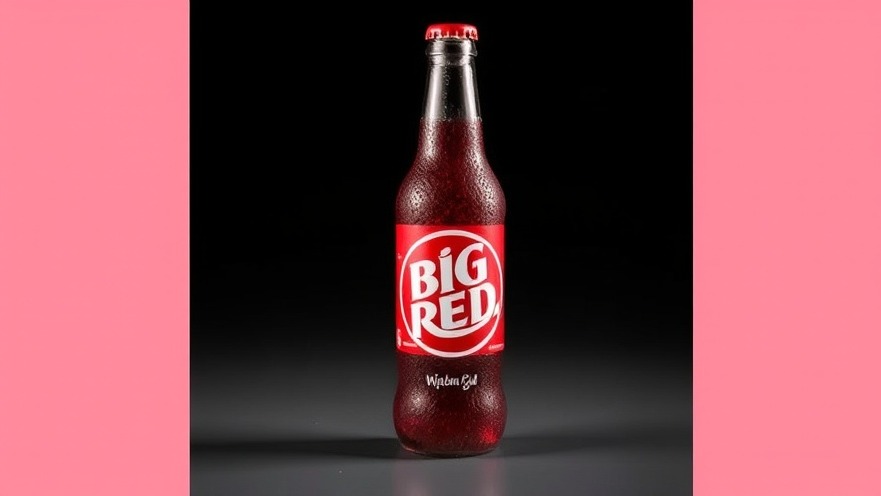
Big Red and the Future of Artificial Dyes
In a bold move towards healthier food and beverage options, the U.S. Department of Health and Human Services along with the U.S. Food and Drug Administration have announced plans to phase out petroleum-based synthetic dyes from America's food supply by the end of 2026. One local favorite caught in this colorful shake-up is Big Red, the iconic soda beloved throughout San Antonio. With its distinctive crimson color attributed to red dye No. 40, the future of this beloved beverage is now clouded with uncertainty.
Red Dye No. 40: A Texas Tradition at Risk
Big Red is more than just a soda to many in Texas; it symbolizes community and tradition, much like the barbacoa it often accompanies at breakfast tables. But with the impending removal of red dye No. 40, fans of the drink are left wondering what the implications will be for flavor, appearance, and culture. Local restaurant owner Brandon Ramos, whose establishment markets the pairing with gusto, expressed concerns over potential changes to the soda that could impact sales. “Big Red is important. It’s woven into the culture of San Antonio,” he said.
The Impact of Federal Regulations on Local Cuisine
The push from health officials to eliminate artificial dyes is rooted in a growing awareness of the potential health risks associated with synthetic substances. Many companies, including General Mills and PepsiCo, have quickly aligned themselves with this campaign. Meanwhile, notable heavyweights like Mars, the controversial manufacturer of M&Ms, have resisted these changes by arguing that their products are safe as currently formulated.
With Keurig Dr Pepper remaining relatively silent amid these alterations, consumers are left in limbo, eager for clarity on how their cherished Big Red will adapt—or if it will adapt at all. Public sentiment indicates that there’s a mix of humor and seriousness about the issue, highlighted by a San Antonian’s tongue-in-cheek Instagram post that threatened a “riot” if Big Red were to change.
A Growing Movement Towards Healthier Ingredients
The broader movement to eliminate artificial dyes stems from increased awareness of food safety and health issues, generally aimed at promoting healthier lifestyles. This concern is resonating deeply with consumers who prioritize natural ingredients in their purchases. As collective advocacy for better food options gathers momentum, the Big Red controversy reflects a much larger conversation about the ingredients present in our daily diets.
Potential Alternatives: What Will Replace Red Dye No. 40?
As the clock ticks toward the 2026 deadline, interest in potential replacements for red dye No. 40 has emerged. Natural colorants derived from plants are gaining popularity, with options like beet juice, hibiscus, or even sweet potatoes offering vibrant hues without the synthetic addition. If Keurig Dr Pepper chooses a new formulation, these alternatives could maintain Big Red’s signature look while elevating its appeal among health-conscious consumers.
Local Culture and Changes in Flavor
The cultural aspect surrounding Big Red presents another layer of complexity. Many San Antonians have memories intertwined with the fizzy drink—from barbeques to family gatherings. Any alteration to its flavor or coloring could disrupt these cherished traditions. Thus, the question arises: how will consumers react to a drink that veers away from the original recipe they love? Community favorites can easily evolve into points of contention and dissatisfaction if customers feel the essence of what they love is lost.
Conclusion: Embracing Change in the Face of Tradition
As consumers await vital information from Keurig Dr Pepper regarding Big Red's future, the debate continues over what the removal of red dye No. 40 means for both health and culture in Texas. With food safety increasingly at the forefront of public outcry, it’s clear that any efforts to reformulate America's refreshments will require companies to tread carefully. For those in San Antonio, the affection for Big Red is undeniable, but will it resist the tide of change? Only time will tell. In the meantime, as consumers navigate these changes, it’s important to remain engaged in discussions about food safety and product transparency.
 Add Element
Add Element  Add Row
Add Row 



Write A Comment